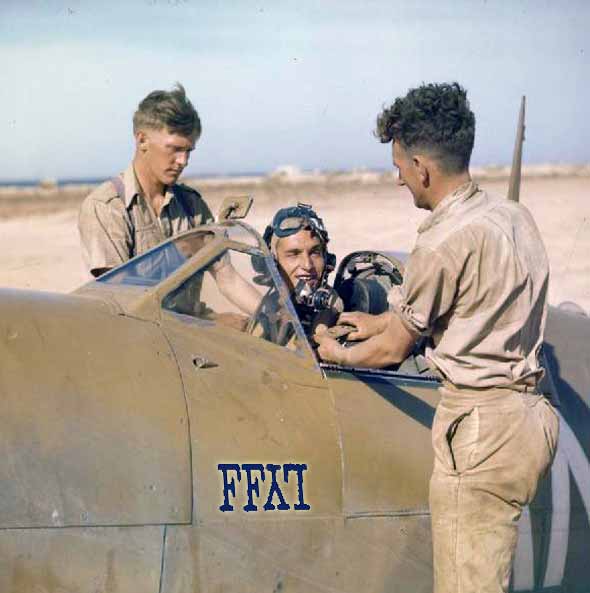William Harry "Big Bill" PentlandRCAF S/L - DFC
|
||||||||||||||||||||||||||||||
-------------------------------------------------- RAF Sends 600 Planes Against Five Countries
|
||||||||||||||||||||||||||||||
| Born in 1917, Lake Saskatoon, Alberta Home in Calgary Served in the militia for two years Educated at Washington State University Also described as being in the gasoline business before the war Enlisted in the RCAF, 9 May 1940 Trained at No.1 ITS (graduated 21 June 1940) No.3 EFTS (graduation date uncertain) & No.2 SFTS (graduated 20 October 1940) - although a DHist summary says he was winged in Dec. 1940 Overseas he flew with No.402 Squadron (5 Feb. 1941 to 25 Feb. 1942) & No.417 Squadron (until 23 June 1943) Returned to Canada, attached to WAC Headquarters, Vancouver In December 1943 he was posted to No.111 Squadron Commanded No.440 Squadron from Feb. 1944 to 7 Oct. 1944 KIA near Wesel, Germany, 6 October 1944 (Typhoon MN641) - A/C blew up while releasing bombs Medal presented by Governor General to next-of-kin, 28 Feb. 1946 |
--------------------------------------------------
RAF SQUADRON BAGS ONE PLANE ANOTHER IS HIT
Belleville and Kirkland Lake Fliers Share Glory in Sweep Over France
WORK IS PRAISED
Somewhere in England, September 28, 1941 - (CP) - A group of representatives of Canadian newspapers were given an opportunity Saturday to talk with pilots of a Royal Canadian Air Force fighter squadron returning from a sweep of Northern France, in which they destroyed one German fighter and possibly damaged a second. After lunching at a famous seaside resort, now almost deserted except for local residents, the Canadian party went to the fighter station and waited on the field to greet the pilots as they stepped from their Hurricanes.
Squadron Leader V. B. Corbett of Belleville and Sergeant Pilot George McClusky of Kirkland Lake shared credit for the plane destroyed. Flying Officer Fred Kelly of Toronto saw another pass through the line of his machine-gun fire and possibly "messed it up" enough to place it in the "damaged" category.
The plane shot down, a Messerschmitt 109, was the second confirmed victim of the Canadians' fire since they moved into this station a little more than one month ago. They also have six probables and two damaged, not including Saturday's one.
The newspaper representatives, who were disappointed earlier in the week when operations at a bomber station they visited were cancelled due to bad weather, spent an interesting afternoon with the fighter pilots.
Welcomed by Commander
They were welcomed at the station by its commander, an R.A.F. officer, who praised the work of his Canadian pilots, saying they "are grand chaps" and first-class pilots with an excellent record, considering the short length of time many of them had been on operations.
The visitors learned of the "splendid co-operation" given by the young Canadians and how they had quickly made themselves at home. As the fighters began to arrive back from over France, the newspapermen singled out men from the parts of Canada they represent and got personal stories of the day's engagements from the beaming pilots, who posed for pictures before removing their Mae Wests.
The plane piloted by Pilot Officer Norm Bretz, Toronto, was the first to appear over the field, and Pilot Officer Brad Walker, London, Ont., let out a cheer when he distinguished the lettering on the streamlined Hurricane. "K for Kitty, and all in one piece, too," he said, explaining it was the plane he usually flies, "but I loaned it to Norm for a day."
Corbett and McClusky landed at almost the same time, and pilots and newspaper representatives soon gathered around them when it was learned they had shot down an enemy craft.
Bishop R.J. Renison of Toronto, who was the padre of Corbett's squadron before it came to England, was among the first to congratulate the squadron leader.
Halved the Plane
Corbett did not know he had "halved" the plane until he landed. "I just shot at it and it ran out of my sights, going down," he said. McClusky, who, like Corbett was claiming his first confirmed victim of the war, said he was on Corbett's tail, and followed the Nazi craft down, firing all the time. "I saw smoke pouring from him, and then the pilot seemed to roll out from the side. His parachute opened up and he went down just like a mushroom."
"It was just like in practice," the Northern Ontario boy said, excitedly. "It was really swell."
Flying Officer Brad Foster of Montreal, who "got in two good shots" at a Messerschmitt, said there was lots of flak and considerable fighter opposition on the way to the target, but that it was "pretty quiet" coming home.
A number of the pilots brought down their machines at other stations to refuel, and landed on their own field as much as an hour later. Kelly, who was one of these, said the German plane flew right in front of his machine guns and "must have taken everything I had."
Nearly all the other pilots on the sweep, including Flight Lieutenant Harry Crease, Windsor, Ont.; Pilot Officer Bill Pentland, Calgary; Pilot Officer Syd Ford, Liverpool, N.S.; Sergeant Butch Handley, North Bay; Sergeant Jerry MacKay, Rock Island, Que., and Sergeant. K. Magee, Moncton, N.B., saw some sort of action.
Tea With Officers
After spending about ninety minutes at the field, the newspaper representatives went to the officers' mess for tea. The mess was in a huge house built at the time of Ann Boleyn, and is considered by the pilots to be one of the best in the country.
Henry G.F. Christie, Saint John, N.B., thanked the officers on behalf of the visiting group, congratulated them on the day's success, and wished them luck in future operations. The party spent another half an hour talking to pilots on the spacious lawn surrounding the mess, then drove back to London.
Earlier in the day they had their first look at Britain's coastal defenses, a distant view from a hotel window during lunch, of barbed wire entanglements along a beach.
Another visit in the crowded day was a brief stop at a recruiting center for women war workers. Men and women were driving about the town in loudspeaker cars drumming up volunteers, and girls were sitting at the windows of the center, making wireless parts for tanks.
The Canadians were told that the need for more women workers is great.
Finally, upon arriving in London at night, the Canadians had a private dinner, then went to the Ministry of Information for a showing of the film, "Target for Tonight" and a number of documentary pictures.
They spent Sunday as they chose, not having an official schedule for the day.
--------------------------------------------------
CANADIAN AIRMEN THRILLED
Magnificent Machine For Low-Level Flying and Ground Strafing
SEA GULL TROUBLE
Somewhere in England, Nov 24, 1941 - (CP Cable) - The Royal Air Force's newest striking weapon, the Hurricane bomber, is giving Canadian fighter pilots their biggest thrill of the war.
Play Havoc
Swooping sometimes to within ten feet of their targets, the Canadians, under the command of S/L Vaughan Corbett, of Montreal and Belleville, Ont., have been strafing and bombing factories, power stations, railway communications, barges and bridges in occupied France in the type of attack they have always wanted to make but have never been allowed before.
The squadron has been on the bombing job for a month and has taken over a new station in the south of England, it previously had been a straight fighter squadron, escorting bomber sweeps and not getting much action, although it had a confirmed record of six German aircraft shot down.
The bomb-carrying fighters have more "zip" than the Hurricanes they used previously, said Pilot Officer Brad Walker, of London, Ont.; "They're sweet machines and get you there in a hurry," he added. The Hurricane bombers are equipped with two 250-pound bombs fitted with delayed-action fuses which enable the aircraft to get clear before the explosion. This delay can vary from a few seconds to a relatively long period of time, depending upon whether a single bomber or a whole flight is attacking the target.
Using small smoke bombs, P/O Fred Kelly, of Toronto, gave a demonstration above his own field of how a Nazi target would be attacked. Traveling close to 250 M.P.H. he swooped down to above the trees bordering the field and "bombed" the target from a 10-foot level, then sped off again as quickly as he had come.
Surprise Element
"That's how we'd do it if we were attacking an airfield or a target out in the open," said Walker, who was watching the demonstration with F/L Bob Morrow, of Toronto; P/O Bill Pentland, Calgary; F/O Jim Thompson, Listowel, Ont.; P/O Sid Ford, Liverpool, N.S.; Sgt. Jerry McKay, Rock Island, Que. and Sgt. Ronny Emberg, of Montreal.
The pilot, commenting on the plane's performance, said "low-level, bombing is comparatively safe because the element of surprise gives the attacker the advantage above the ground defences."
"Of course," Walker said, "if you get hit when flying just above the ground, you're pretty sure a goner, because there's no chance to get control of your plane or bail out. But so far our only real trouble has been with sea gulls.”
Walker explained that several planes have returned to their stations with holes made by gulls into which they had flown.
The squadron's biggest day was November 8, when 300 aircraft from the fighter command, and Blenheim bombers as well, smashed at occupied France.
Escorted by two Spitfires, the Canadians swept down on factories working for the Nazis and with guns blazing, went in at "naught" feet and planted bombs in the middle of the target. As they left they saw the tower crumble towards the earth and the whole factory burst into flames.
The pilots, following the example of some bomber squadrons, paint their bomb fuselages after each raid. There are not many that have not yet been painted, but if they get good weather they hope to have their fuselages looking like miniature bomb racks before the end of the year.
--------------------------------------------------
1942
--------------------------------------------------
Montrealer Becomes Leader of Squadron
London, April 6, 1942 — (CP Cable) — S/L Paul S. Pitcher, of Montreal, a veteran of the Battle of Britain, has been given command of a new R.C.A.F. Spitfire squadron after returning from a brief visit to Canada, it was announced last night.
Flight-commanders who will service under Pitcher are F/L F. B. Foster, of Montreal, and F/L W. H. Pentland, of Calgary, both of whom used to fly with another Montrealer, S/L Vaughan Corbett.
--------------------------------------------------
1943
--------------------------------------------------
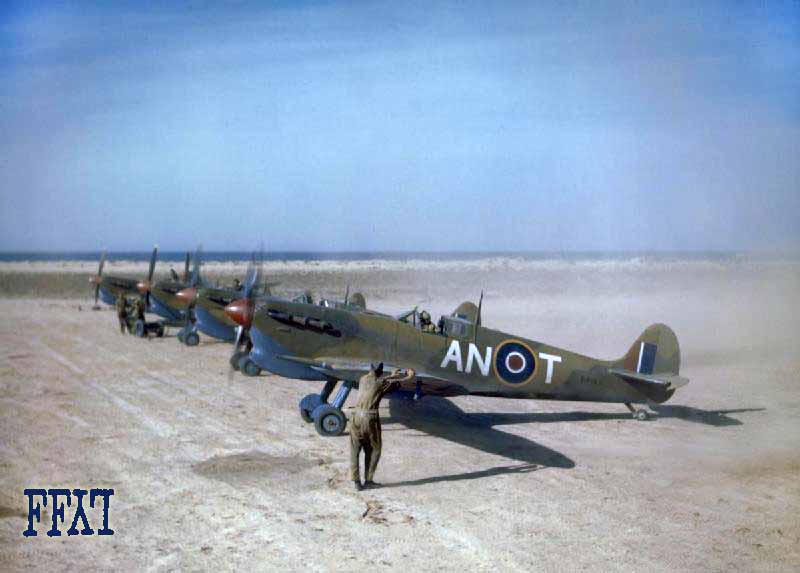
F/L Pentland in Spitfire BR195 'AN-T', of 417 Squadron, with his flight at Goubrine, Tunisia
4 CANADIANS DOWN BOMBER, SAVE CONVOY
RCAF Squadron Bags First Enemy Victim in Tunisian Battle
An Advanced Airfield, Tunisia, April 23, 1943 — (CP) — An R.C.A.F. fighter squadron has destroyed its first victim in the Battle of Tunisia.
It was announced today that four pilots from four Canadian Provinces shared in the destruction of an enemy torpedo bomber in a brief engagement which probably saved an important unit of the Royal Navy convoy in the Mediterranean.
Sharing credit for shooting down a Heinkel III were S/L Brad Foster of Montreal, F/L Bill Pentland of Calgary, P/O Douglas Bruce of Penticton, B.C. and P/O J. H. Harmer of Toronto.
A formation from the squadron was escorting the convoy off Gabes when Foster spotted the big Heinkel coming in fast and low to launch its torpedoes at a naval craft. He dived on the enemy plane followed by Pentland and Harmer.
The Montrealer's first squirt of cannon and machine-gun fire winged the Heinkel and, after Pentland and Harmer each fired a burst, it broke into flames. One of the five-man crew leaped from the aircraft while the firing was still in progress and fell 50 feet into the sea like a human bullet. Bruce, who was watching the battle from above, came down fast to finish off the flaming torpedo-bomber with a final blast which literally blew it to pieces at wave-top height.
The Nazi pilot, one leg broken by a cannon shell, was picked up by a naval launch which also rescued a companion who had jumped and who escaped injury despite terrific impact with the water.
The Canadians suffered no injury or damage to their aircraft.
--------------------------------------------------
Canadian Flier Has Day At Hockey and Hitting Foe
By Cable to The N.Y. Times, LONDON, Dec. 19, 1943 — A few hours after starring in an ice hockey game today here, Flying Officer Bob Pentland (Bill's brother) of Calgary Canada, made a sweep over France in a Spitfire and along with Pilot Officer Claude Weaver DFM of Oklahoma City shot up a German parking lot, setting fire to trucks and drums of oil.
Both men are members of the Wolf Squadron of Royal Canadian Air Force fighters. They made several attacks on the target before they were satisfied with the results
Flying Officer Pentland who played on the losing side in the hockey game, is said to have been headed for a professional career with the New York Rangers when he joined the RCAF.
--------------------------------------------------
1944
--------------------------------------------------
40 SQUADRONS OF R.C.A.F. NOW ARE OVERSEAS
London, Feb. 8, 1944 - (CP) - The number of R.C.A.F. units now overseas has been swelled to about 40 with the arrival in the United Kingdom of several squadrons.
Overseas headquarters announced the arrival today and said the units arrived with a full complement of air and ground crews, but did not disclose the type of squadrons. The airmen, who came from many parts of Canada, included fighter pilots, some of whom have completed one tour of operations overseas.
The announcement said the units, which were accompanied by a large draft of personnel for all branches of the service, including the Women's Division and nursing sisters, were complete. They arrived by ocean transport, presumably without aircraft, which probably will be provided in the United Kingdom.
Welcoming them, G/C G. C. Bond of the Air Ministry said: "We are most grateful for all the Dominions are doing in all parts of the world and especially for the very large part your airmen now are taking in the air offensive in Europe, which is a magnificent contribution toward hastening victory.
Canada's air arm in the United Kingdom alone includes the bomber group, flying giant Lancasters and Halifaxes, two fighter wings with Spitfires, and other squadrons equipped with Beaufighters, Mosquitos and Mustangs, as well as Coastal Command flying boat units.
A Canadian Spitfire fighter squadron is in action in Italy and there is a flying boat unit in Ceylon.
S/L Brad Walker, D.F.C., of London, Ont., was one of the pilots returning for a second tour of operations. He has seen action against the Germans in Europe and the Japanese in the Aleutians. Others included S/L H. W. McLeod, D.F.C. and Bar, Regina, and S/L E. H. Pentland, Calgary, who distinguished themselves in Britain and the Middle East, and S/L R. W. Norris of Saskatoon, who has flown in Britain, Newfoundland and Canada. Walker is among a number of fliers holding the United States Air Medal for deeds over the Atlantic.
Ontario arrivals included:
F/L S. H. R. Cotterill, 3 Claxton Blvd., Toronto; F/O's J. T. Marriott, C. E. Scarlett, Toronto; W. I. Williams, Tilbury; A. Hunter, Hamilton; A. J. Horrell, Windsor; D. G. Burgin, Windsor; J. H. Houser, 362 Herkimer St., Hamilton; P/O's S. Breggman, A. A. Cole, H. M. Dale, C. E. Whitaker, Toronto; L. H. Wilson, Stratford; V. A. Stortz, Kenilworth; J. G. N. LeJambe, Timmins; F/Ss M. E. Maloney, 674 Kingston, Rd., Toronto; W. E. Deforest, Merritton; J. H. E. Contant, Cornwall; Sgts. J. M. Turner, Peterborough;. D. A. Veri, Hagersville; K. L. Roth, Woodstock; W. G. Dunk, Fort William; J. E. Dale and M. G. Richardson, Ottawa.
--------------------------------------------------
CITY OF CALGARY ADOPTS VALIANT "WOLF" SQUADRON
London, March 13, 1944 — (By Mail) — The "Wolf" squadron of the Royal Canadian Air Force, which has just been formally adopted by the City of Calgary, is the top-scoring fighter squadron of the Royal Canadian Air Force. During 1943 it out-topped all other Spitfire squadrons in Fighter Command with the exception of one Norwegian unit.
The "Wolves," now commanded by Squadron Leader R. A. Buckham of Vancouver, fly with an R.C.A.F. wing commanded by Wing Commander Hugh Godefroy, D.F.C. and bar, of Toronto, who is himself a former Wolf squadron commander. The squadron was the first of a series of winning units to be formed overseas from graduates of the British Commonwealth Air Training Plan, and began operations in the early summer of 1941. Its first big victory was on August 19, 1941 — one year to the day before the Dieppe battle — when its pilots destroyed four enemy aircraft. On September 27 the same year, it destroyed another three.
When the 1942 "sweeping season" opened, the squadron looked forward to a successful summer, but for several months tragedy stalked it. The English squadron commander went down during a sweep and two flight commanders were lost at about the same time. A fine job of rebuilding the squadron's spirit and fighting abilities was done by a young New Zealand hero of the Battle of Britain, Squadron Leader A. C. Deere, D.F.C. and bar, whose personal score at the time stood at 18 enemy aircraft destroyed.
Deere worked hard training his pilots but, just as he had got them into first-class fighting trim again, another tragedy overtook them. One morning, during a sweep across the Channel, the squadron was attacked by a greatly superior force of Focke-Wulfs which outnumbered them four to one. Five Spitfires were shot down and although it was learned some time later that the majority of the pilots concerned were alive and prisoners of war, the squadron was moved to a quiet area where it stayed for some time.
In the Dieppe engagements, on August 19, 1942, it came into its own again. By this time it was led by a brilliant Nova Scotian, Squadron Leader Leslie Sydney Ford of Liverpool, who had won the D.F.C. for, among other things, sinking an enemy destroyer while flying Hurri-bombers. Ford led his men over Dieppe, and between them they destroyed six enemy aircraft - of which Ford got two - winning a bar to his D.F.C.
A few months later the squadron became part of an R.C.A.F. fighter wing.
During 1943, flying under the leadership of Ford and other commanders who succeeded him, destroyed 59 enemy aircraft. Ford was eventually promoted to wing commander and given command of another Spitfire wing of the R.C.A.F. Shortly afterwards he was shot down and posted missing during a low-level attack on enemy E-boats in the North Sea. But, in the meanwhile, his squadron had continued in the fine tradition which he had set. It was led successively by Squadron Leader Charles Magwood, D.F.C., Squadron Leader H. C. Godefroy, D.F.C., both of Toronto, and Squadron Leader R. A, Buckham, of Vancouver. In two days in April 1943, it destroyed eight enemy aircraft — its best two days of the year — and, month by month, continued to pile up its score. Today, proud of the fact that the City of Calgary has adopted it, it is still in the front line. The idea for the adoption originated with a young Calgary pilot, Flying Officer W. H. Pentland, who is at this moment in hospital recovering from serious injuries received in a crash during an operational flight. |
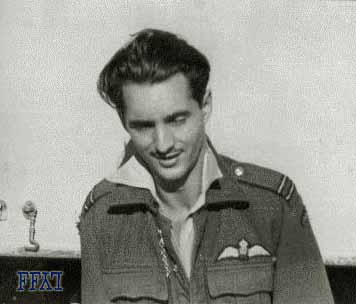 F/L Pentland (Guy Wood Collection) |
--------------------------------------------------
ROCKETS, BOMBS ARE FINE TEAM IN AIR DRIVES
With the R.C.A.F. Somewhere in England, June l5, 1944 - (CP) – “Rockets are accurate but bombs are far more spectacular from the pilot's point of view."
Thus is the consensus of pilots of an all-Empire Typhoon squadron based in Southern England in which there are many Canadians serving. The squadron made its first rocket attack Oct. 25, 1943, destroying the power house at Caen, France.
Only recently was the use of rockets by Allied aircraft taken off the secret list.
And since this sector, commanded by Group Capt. Paul Davoud, D.S.O., D.F.C., of Kingston Ont. includes rocket-carrying Typhoons and an R.C.A.F. Typhoon bomber squadron, practically all types of targets can be assigned to it.
Compare Observations
The aircraft take off from the same base after attending the same briefing and, after the show, compare observations. Frequently these various squadrons act as "flak busters" for the one completing the high or low-level mission. "They strafe anti-aircraft defenses from "the deck" while R.P. or bombing attacks are delivered from above.
As may he expected, the devotees of R.P. and bombs seek to out-do each other in complete destruction of targets, so that a slightly damaged bridge or rail junction does not have to be finished off with the other weapon.
Both have reported exceptionally good results recently. Two squadron of R.C.A.F. Typhoon fighter-bombers, escorted by two R.A.F. "flakbusting" squadrons, accurately bombed and destroyed an important railway bridge south of Rouen, May 28, and disrupted rail communications near by. The leader, S/L William Pentland, Calgary, described the target as “ideal.”
Hit Wireless Equipment
"Rocket pursuit" Typhoons, as the pilots have nicknamed themselves, from the R.A.F. unit using the same airfield, neatly dispatched enemy wireless installations in an old fortress in the Channel Islands the day previously, and destroyed German barracks near Dieppe the same day.
"The stone building just crumpled at the corners when the rockets drilled in and exploded," reported P/O N. E. U. Arrons of Suffolk.
The squadron has among its personnel one pilot from Trinidad, four Australians, three Canadians, a resident of the Orkneys and the remainder from England.
The Canadians include F/O Kenneth Allison, Vankleek Hill, Ont. and W/O Kenneth (Chad) Hanna of Brockville.
--------------------------------------------------
Knew Too Much About Invasion, Canadian Fliers Kept at Base
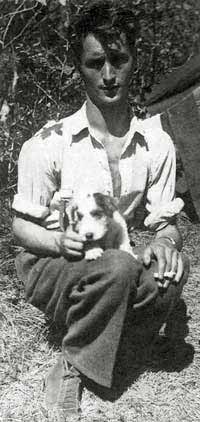 |
An RCAF Airfield in Britain, June 26, 1944 - (CP) - Canadian Typhoon squadrons which bombed and strafed German positions in Northern France in the week before D-Day were led by the second-in-command of each unit because the commanding officers knew too many invasion secrets. Bill Pentland & Chip (photo from "TYPHOON AND TEMPEST The Canadian Story" by Hugh Halliday & available at CanAv Books) |
--------------------------------------------------
Canadians Dive-Bomb Nazi Bases Near Caen
By ALLAN NICKLSON From An R.C.A.F. Airfield in Britain, June 26, 1944 - (CP Cable) - Canadian Typhoon fighter-bomber squadrons, winding up a week of widespread smashes at German supply columns, buzz-bomb bases and communications centers, dive-bombed enemy strongpoints confronting the Allied lines near Caen during the week-end.
Several squadrons, including the City of Ottawa and City of Montreal outfits, slanted down 500-pound high explosives in close support of army units which had dropped red smoke shells to mark the targets - enemy positions within a mile of the Allied lines.
"There was no doubt where we had to bomb," said F/L Hal Gooding, Ottawa. "The army really laid smoke shells right on the spot and marker smoke could be seen for miles."
Great Blast of Flame
City of Montreal squadron pilots said a great blast of flame and smoke leaped from the ground as they pulled away from one target and the general belief was that some bombs struck an ammunition dump or oil tank.
In another week-end operation, City of Ottawa fliers cut off the retreat route of some German troops in the area north of Caen by destroying one end of a concrete bridge with 1,000-pound bombs.
During the week the Ottawa squadron carried out hundreds of sorties against bridges, railway tunnels and pilotless plane installations in the Pas-de-Calais district.
Knock Out Robot Sites
"These buzz-bomb hideouts are hard to find," said Gooding, who led the Ottawa squadron on a day in which it flew three operations from one coast airfield in search of bases of the new Nazi weapon and a fourth sortie from its own base to attack a railway tunnel.
Gooding believed that the squadron's bombs put a number of pilotless plane bases out of commission.
F/L Cliff Hicks, Winnipeg, led the squadron in an attack with 500-pound bombs on a tunnel at Lassard, near Mozidon.
The Typhoons attacked at a height of only 15 feet and the bombs were released a couple of hundred feet from the tunnel mouth.
"They were set with delayed-action fuses and hit around the mouth of the tunnel or skidded inside," said Hicks.
Railway yards south of Tilly were another objective, with S/L W. H. Pentland of Calgary leading a formation which included F/O Ronald Doidge, La Salle, Ont.; F/O Robert Battle, Caledonia, N.S. and F/O Donald Wright, Trenton, Ont.
In addition, long-range reconnaissance flights deep behind the German lines saw the Canadian pilots strafe various types of ground targets.
--------------------------------------------------
R.C.A.F. Spitfire Fliers Catch 12 FW's, Down 10
With the R.C.A.F. in France, July 14, 1944 - (CP) - In their second spectacular victory in little more than a week, an R.C.A.F. Spitfire squadron commanded by S/L Tommy Brannagan, Windsor, Ont., Thursday night shot down in flames without loss to themselves 10 of a formation of 12 Focke-Wulf 190's spotted flying at tree-top level near Argentan, about 10 miles south of Caen.
Recently when the squadron ran into some Germans it destroyed five and its score stands now at 15 confirmed victories in two sorties, a record unequalled by any other fighter squadron in Normandy.
The squadron is part of the celebrated Canadian wing led by W/C J.E. (Johnny) Johnson, much-decorated English airman from Nottingham, who with 35 planes downed in air combat, is the leading Allied ace in this theatre.
Three of the German aircraft destroyed late Thursday fell before the guns of F/O Bill Myers of Windsor, Ont., a veteran of between 80 and 90 operational flights, whose only previous score was a half-share in the destruction of an enemy dive-bomber.
Brannagan himself got two. F/Ls G.E. Mott of Sarnia, Ont., and J.C. Copeland of Toronto, F/Os Lloyd (Lou) Plummer of Toronto, B.M. Mackenzie of Stettler, Alta., and D.H. Kimball of Onatucket, N.B., each got one.
Three of Thursday evening's victors also shared in the previous five-plane triumph when Brannagan shot down two and Kimball and Mott each got one.
Brannagan has been in command of the squadron for only a fortnight. The youthful airman, who started his second tour without any rest period, said the Germans "didn't have a chance because apparently they didn't see us until we were right down on them." He said the FW's were carrying bombs.
Typhoon fighter-bombers destroyed a bridge and smashed a section of rail track near Fleury-sur-Orne last night, in a dive-bombing assault against enemy lines of communication behind the battlefront.
The City of Ottawa squadron took off from this advanced base in two flights. One, led by F/L Harold Gooding of Ottawa, smashed the bridge, and another flight led by the squadron commanding officer, S/L Bill Pentland of Calgary, struck the rail tracks approaching a second bridge near Etavaux, further north.
W/O Pat McConvey, 116 Barton Avenue, Toronto, said two planes ahead of him bombed the bridge with one direct hit right in the center. "The bridge was sagging in the center like a V when I last saw it," he added.
F/O John Dewar of London, Ont. reported, “I think the bridge had a little bent in it before we got there — anyway it's sure got one now.”
--------------------------------------------------
UNIT ADOPTED BY OTTAWA
With the RCAF Overseas, Aug. 30, 1944 — The Typhoon fighter-bomber squadron of the RCAF, commanded by S/L W. H. Pentland of Calgary, has become, officially, the Beaver Squadron of the City of Ottawa.
'The boys are keen about the adoption," S/L Pentland said when word came through that Ottawa City Council had approved the adoption. "Now that it has come through, they are anxious to get in touch with the people of Ottawa and begin correspondence."
"One of the pilots, F/L Harold Gooding, a flight commander from Ottawa who knows the mayor, had already written him on behalf of the rest of us and told him that pilots and ground crew alike are enthusiastic." F/L Gooding's wife lives at 76 Kennington Ave., Ottawa, and his father at 19 Morris St.
The City of Ottawa squadron is the second Canadian Typhoon squadron to be adopted by a leading Canadian city in the past few days; that commanded by S/L Frank Grant of Montreal was officially named after his home town a few days previously.
Among Ottawa men in the ground crew is AC1 A. Warren of 381 Kent St.
Others from Ontario are LAC Charles E. Ferguson, Woodville; LAC Norman Dubois,178 Campbell St., Sarnia; LAC Roy G. Gilbert, 985 Raymo Rd. Windsor; LAC T. H. Hayden, 75 Superior St., Brantford; AC1 Frank Norman, R.R. 4, Shimcoe; LAC William H. Randall, 20½ Barton St. E., Hamilton; AC1 John G. Robson, 66 Henry St., St. Catharines; LAC William H. Strong, Trout Mills; AC2 Ken Watson, 110 Mortimer Ave., Toronto.
--------------------------------------------------
Canadian Fighter Squadrons Operate From Belgian Bases
With the RCAF in Belgium, Sept. 12, 1944 - (CP) - Security regulations were relaxed today to permit disclosure that at least three Canadian fighter squadrons — the Wildcat, Nomad and City of Ottawa — are flying from mobile Belgian bases and taking a heavy toll of German shipping and road traffic in the Rhineland.
Flying rocket-firing Typhoons, the Canadians are under the command of G/C G. R. McGregor, DFC, of Montreal, a veteran of the Battle of Britain, and were the first airmen to attack German territory with their rockets.
This occurred while they were shooting up German shipping on the Rhine, and their first flight against Germans was led by F/O Royce Johns of Saskatoon. The Canadians left two tugs smoking on the Rhine after hitting them with cannon-fire.
"Everything looked peaceful until we opened up," said Johns. "We had to fly through a curtain of flak and then we left in a hurry."
Nomad Squadron members, commanded by S/L Jack Berines of Tothill, Alta., after their first attack on German targets Thursday, reported streams of refugees marching toward the Netherlands border from Germany.
While the Nomads were making their first flight, two other RCAF dive-bomber squadrons attacked enemy transportation near the German border of the Netherlands. One, the City of Ottawa under S/L William Pentland of Calgary, damaged two trains.
--------------------------------------------------
Distinguished Flying CrossPENTLAND, a/S/L William Harry (J3204) - No.440 Sq. This officer has completed many sorties on his second tour of operational duty. In air operations over the Normandy area he has led the squadron on many sorties during which bridges, enemy strong points, troop concentrations and mechanical transport have been determinedly attacked. Throughout these operations, Squadron Leader Pentland has displayed great skill, courage and resolution. S/L Pentland |
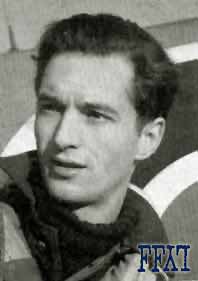 |
--------------------------------------------------
1945
--------------------------------------------------
Air Force Casualties
June 5, 1945 - The Department of National Defense for Air has issued the following casualty lists, No.1213 and 1214, showing next of kin from Ontario. List no. 1214 lists as Killed On Active Service Overseas:
PENTLAND, William Harry, DFC, S/L, Calgary.
--------------------------------------------------
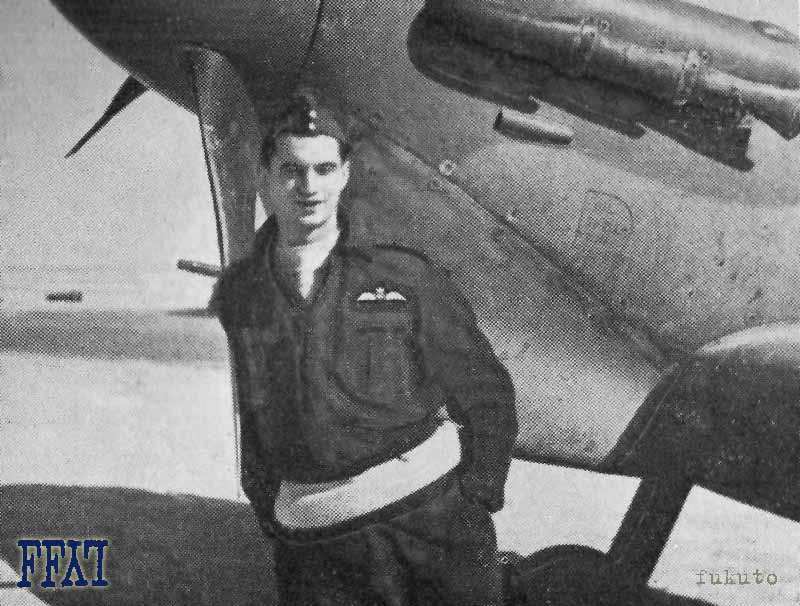
--------------------------------------------------
Victories Include :
| 18 Sept 1941 4 Dec 1942 22 Mar 1943 |
one Me109 1/2 Ju88 1/4 He111 |
damaged damaged destroyed * |
.25 / 0 / 1.5
* shared with S/L F.B. "Brad" Foster, P/O D.E. "Doug" Bruce, P/O J.H. "Bob" Harmer
--------------------------------------------------


